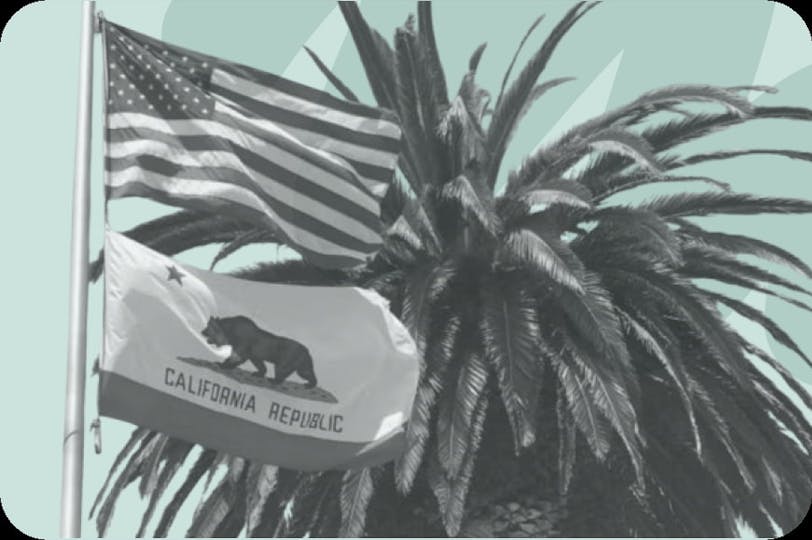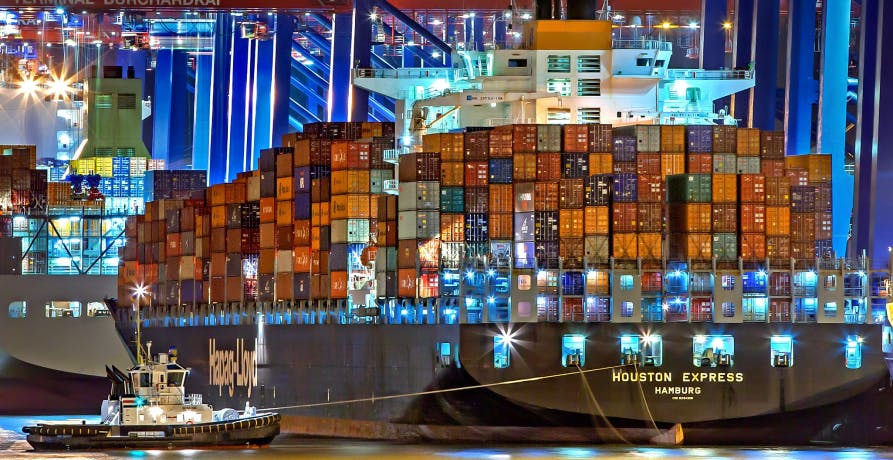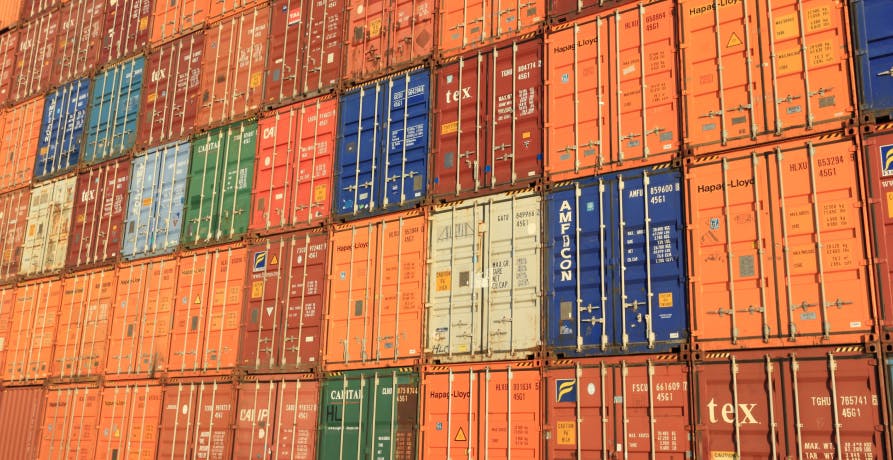
California Climate Accountability Package: SB253, SB261, & SB252
What is the California Climate Accountability Package, and how do SB 253 and SB 261 (SB 219), and SB 252 help the state work towards their environmental goals?
ESG / CSR
Industries



Free trade agreements are commonly praised for their economic benefits and potential to spur growth. Recently, however, there's been a global shift in perspective as nations begin to recognize these agreements as powerful tools for environmental sustainability. More and more of these agreements are now incorporating provisions specifically designed to foster clean growth.
👉 In this article we'll explore what free trade agreements are, how they work, and how countries such as the UK can use them to promote their environmental objectives.
Free trade agreements (FTAs) are treaties between two or more countries that are designed to remove or reduce barriers to trade and investment between the countries. They aim to create stronger trade links and commercial ties.
FTAs regulate things like tariffs, taxes, and duties that countries impose on imports and exports. By removing or offering reduced tariffs, goods and services can be more easily bought and sold across international borders.
The main aim of a free trade agreement is to facilitate trade, providing economic benefits to the signatories. Essentially, these agreements work by reducing or eliminating tariffs, import quotas, and other trade barriers between the participating countries, making it easier and more cost-effective to exchange goods and services.
Following a period of discussion and negotiation, the countries agree to enter into a legally binding trade agreement, the aim of which is to make trade more efficient and profitable. This is accomplished through the removal or reduction of tariffs on goods, the simplification of customs procedures, the removal of unjustified restrictions on what can or can't be traded, and the facilitation of workers' movement between the countries. Additionally, FTAs may also have strategic, political, or aid benefits as well.
👉 A note on terminology: Where there are two countries involved in the FTA this is known as a bilateral agreement, and where there are multiple countries involved this is known as a multilateral agreement. Free trade areas are regions encompassing a trade bloc whose member countries have signed an FTA - the EU, which operates a single market for member states is an example of a free trade area.
❗️Free Trade Agreements are legally binding, which means that they ultimately provide certainty and security for investors, importers, and exporters.

The World Trade Organization (WTO) is the international body charged with dealing with global trade rules. Its purpose is to ensure that trade flows smoothly, consistently, and as freely as possible.
Members of the WTO must implement what's called most-favored-nation (MFN) treatment to other members of the WTO. In effect, this means that members must extend the same trade treatment and lower customs duties to all members of the WTO as their most favorable trade agreement. In effect, this means that FTAs must eliminate tariffs and other restrictions on "substantially all the trade" in goods between WTO member countries.
FTAs are, on the surface, inconsistent with the WTO's principles as they grant the signatory countries preferential treatment over other trading partners. However, the WTO considers free trade agreements to be trade-enhancing and so allows it as an exception to this rule.
Countries can enter into free trade agreements that grant more favorable treatment to another country (or countries) if they abide by certain conditions laid out by the WTO. These conditions can be found in the WTO's General Agreement on Tariffs and Trade (GATT) and the General Agreement on Trade in Services (GATS). The countries involved are required to notify the WTO of the negotiated agreements, which are then subject to review by the WTO.
Free trade agreements help to boost economic and job growth through stronger trade and investment ties. By removing trade barriers or offering preferential tariffs to participating countries, the citizens of a country that is a signatory to the free trade agreement benefit from improved access to a wider range of goods and services, innovative technologies, and a more dynamic business climate.
Other FTA benefits include:
Despite the many benefits of FTAs, they're not immune to criticism or challenges. Some claim that they have a negative impact on the environment by increasing pollution and degrading natural resources.
Examples often given to illustrate the point include the increased movement of goods and services overseas, which results in increased transportation and therefore increased carbon emissions. Another example given is that FTAs increase the risk of certain countries becoming bases for pollution-intensive activities where their environmental policies are less stringent.
However, supporters of FTAs are quick to point out that increased trade and economic growth can also benefit the environment by supporting social welfare and encouraging investment in and the development of green technology. Additionally, a country's organizations are incentivized to adopt more stringent environmental standards as they become exposed to the environmental standards of other territories and are forced to compete in a global market.

As awareness of climate change and human impact on the environment intensifies, an increasing number of free trade agreements are being enhanced with environmental provisions. These additions aim to ensure that trade does not adversely affect our natural surroundings.
These provisions can help to harmonize environmental regulations between developed and developing countries. Countries that are more developed when it comes to environmental concerns can provide resources, share learnings and technology, and encourage less developed countries to strengthen their environmental regulations.
With the UK's exit from the European Union the UK Government is now required to re-negotiate many of its free trade agreements, the UK has a unique opportunity to promote higher levels of environmental standards in its international trade deals. The UK Government has committed to making environmental impact a new consideration when evaluating future trade deals.
In this section, we'll explore examples of UK free trade agreements that have incorporated environmental and sustainability provisions, and examine how they aim to help the environment.
The UK and New Zealand signed a new trade agreement in 2022. It was the second free trade agreement negotiated by the UK post-Brexit. As part of the agreement reached, an environmental chapter was included, reaffirming the UK and New Zealand's commitment to the targets of the Paris Agreement and their aim of reaching net zero emissions. The free trade agreement encourages both trade and investment in low-carbon goods, services, and technology.
Specific environmental provisions of the FTA include:
New Zealand is a country for whom environmental concerns were already a strong priority. They had already taken big steps towards net zero emissions and had previously adopted an all-government approach to sustainability. Therefore, the inclusion and negotiation of a chapter on the environment within the FTA was not so much of a stretch.
However, the UK will face more of a challenge when it comes to countries that are more reliant on fossil fuels. This is particularly the case where the country is a developing nation. Scaling up industry requires huge amounts of energy, something that would be hard to achieve without the use of fossil fuels.
One such country that the UK is currently negotiating a FTA with is India. As part of the negotiations, the UK has strongly committed to upholding high environmental and sustainability standards as part of the agreement. The UK has pledged not to compromise on any of its standards in this respect. The UK is hoping to include the following provisions within the FTA:

Free trade agreements present an opportunity for countries, including the UK, to reaffirm their commitments to net zero emissions and other environmental targets. By incorporating environmental provisions into the agreement, they can ensure that these targets are not compromised by any trade agreement, and in fact, the mechanisms of the trade agreement can facilitate progress with regard to environmental and sustainability objectives.
Not only this, free trade agreements also present an opportunity for countries to promote collaboration when it comes to green projects, and to encourage the alignment of higher environmental standards. Countries such as the UK, which have already committed to reaching net zero and have taken steps at a national level to reach this goal have the responsibility to avoid any watering down of standards when it comes to FTAs, it is their duty to push other countries to follow suit and to take climate action.
At Greenly we can help you to assess your company’s carbon footprint, and then give you the tools you need to cut down on emissions. Why not request a free demo with one of our experts - no obligation or commitment required.